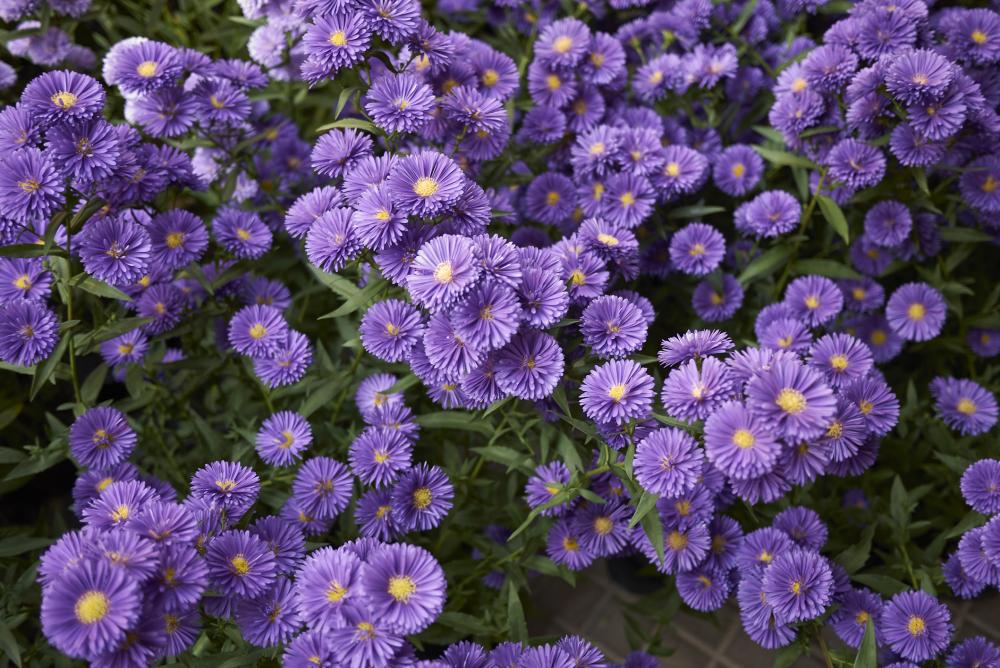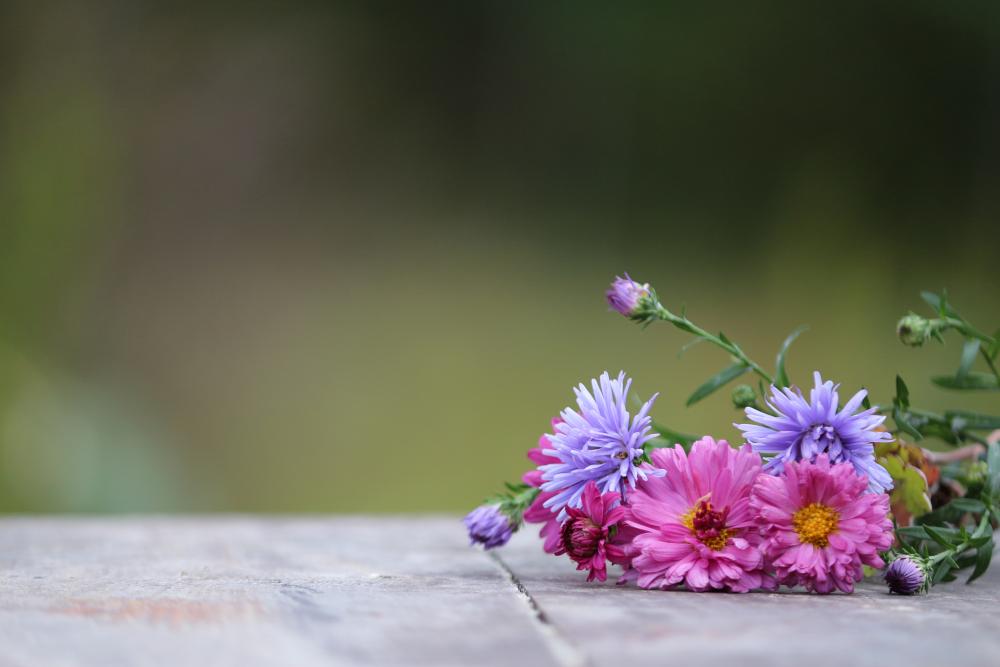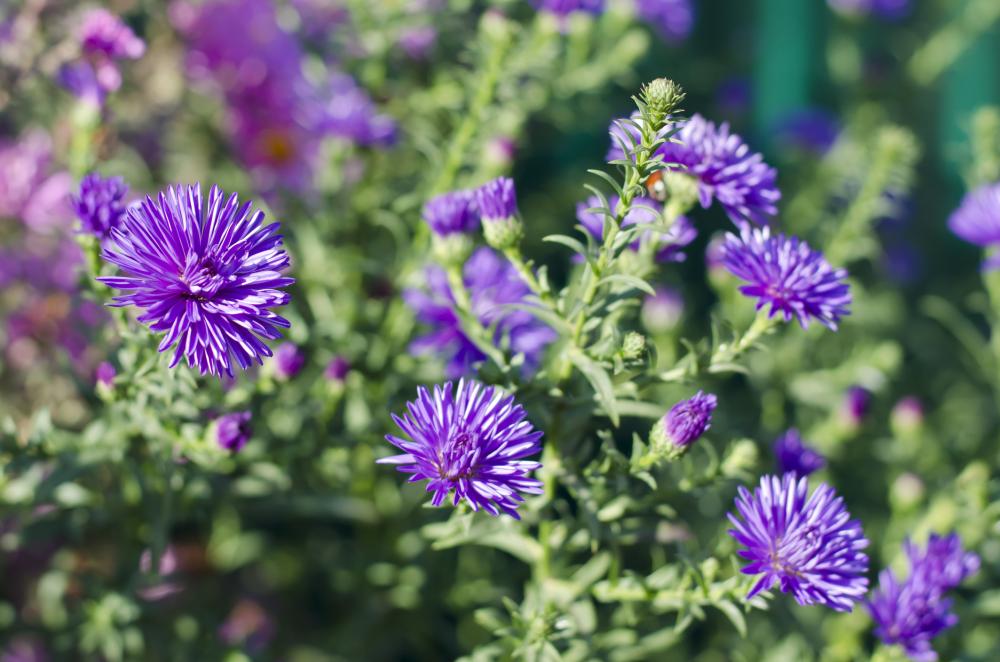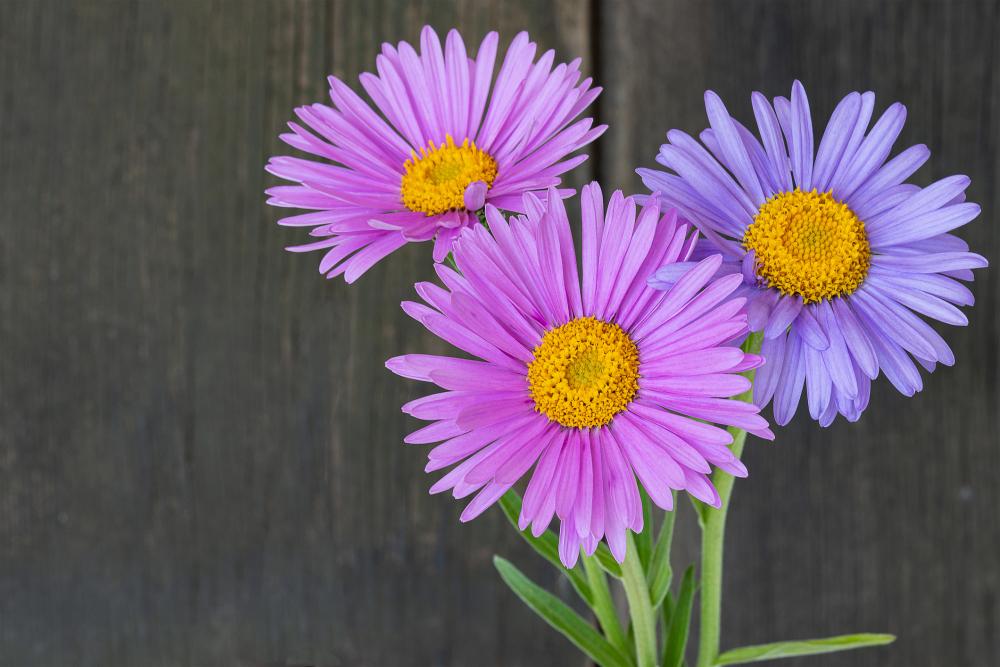Asters Growing Problems and How to Fix Them
Asters are hardy perennials with stunning flowers and amazing foliage. But despite the fact that they grow well in different types of soil and weather conditions, they still have their fair share of problems. Even the new cultivars, which are primarily disease-resistant improvements on the original species, they too can fall prey to different infections.
Sometimes the asters won’t bloom, which is a serious flaw since the flowers are the main reason many people grow the plants in the first place. Other problems might occur as a result of the plants in close proximity to the asters. In other words, asters companion plants should be taken seriously. So how do you handle these asters growing problems, and what are the best ways to fix them? Read on to find the answers.
Asters Not Blooming
To say that asters without flowers are not worth the effort might seem a little harsh. But in all honesty, the perennials plants don’t look the same without those purple, pink, blue, and white blooms. So when your asters stop blooming, you have every reason to feel concerned.
Here are the main reasons your asters are not blooming.
- Auto-seeding: If you leave the flowers of asters on the plants until they fade, they’ll produce plenty of seeds that plant themselves in the soil and grow the next spring. These new plants don’t usually bloom.
- Time: Different aster varieties bloom at different times of the year. Most will bloom between August and September. But some cultivars will have flowers in early summer, while others can last until the first frost.
- Age: Not all asters bloom in the first year. Some will delay the flower production until the second year.
- Wrong Fertilizer: If you feed your asters a fertilizer rich in nitrogen, you’re boosting their foliage and root growth at the cost of the flowers.
- Diseases: Some infections, such as powdery mildew, could kill the flower buds before they had a chance to bloom.
How to Fix it
As varied as the causes of asters not blooming, for the most part, it all comes down to either wrong care and maintenance or the plant is just too young. Here are a few steps to take to make sure your aster will bloom year after year.
- Deadhead the aster flowers before they get pollinated. This will stop auto-seeding and also trigger new flower buds to emerge before the season is over.
- Allow your asters time to bloom. They might be late bloomers. If the season passes without a single bloom, then check for the other causes listed above.
- Before the first buds emerge, feed the asters with phosphorus-high fertilizer. A custom 5-10-10 fertilizer will reduce the nitrogen and trigger an abundance of flower buds.
- If you had just bought the aster plant from a nursery, it might be too young to flower. Give it another year and see if it will bloom.
- Treat any diseases or infections as soon as you discover the symptoms. If you notice any cobweb on the leaves and stems, that’s most likely powdery mildew. Spray the plant with a fungicide to protect the flower buds.
Asters Wilting
Even with their reputation as hardy perennials, asters might be susceptible to some common diseases such as wilting. Aster wilting is a lethal disease that infects mature plants around the time flowers open up. Sometimes it will also infect young plants and cause them to die prematurely. So what causes asters wilting?
The official name for it is Aster fusarium wilt, and it’s an insidious fungus that lays its spores in the soil. There the spores lie in waiting for the live roots of a plant to infect. They could remain in the soil for many years. The first signs of asters wilting are the lower leaves turning brown. Then the flowers drop in full bloom, finally, the stems show brown marks. By then, it’s too late to save the plant.
How to Fix it
Unfortunately, once an aster is infected with an aster fusarium wilt, there’s no saving it. However, you should try to save the other asters around it. Here are a few steps you can take to ensure the fungus doesn’t spread.
- Pull out the infected plants by the roots and burn them. Don’t use them to make compost or as mulch to avoid spreading the spores.
- Don’t plant asters in an area that was infected with aster fusarium wilt before.
- If possible, remove the top 10 inches of soil from infected areas and replace it with fresh soil.
- Buy disease-resistant seeds and cultivars to plant in your garden.
- Turn the soil between plants to solarize it. This might help eliminate many of the pathogens in the soil, including fungus spores.
Asters Root Rot
Root rot is a common problem for almost all plants. The more sensitive the roots of the plant, the more susceptible it is to get root rot. While the main cause is overwatering and poorly drained soil, the real culprit is Rhizoctonia solani. This fungus thrives in wet soil and attacks the roots of the plants swimming in murky water, causing rot.
But that’s not the only part the fungus attacks asters. It also travels up the roots to infect the stems and even the leaves as well. But by the time it reaches the stem, the roots would be totally damaged, and the aster is on its last leg. That’s what makes it a difficult task to detect the disease early and save the aster.
How to Fix it
Since Rhizoctonia solani resides in the soil, you need to handle your soil carefully. In this case, prevention is a lot better and more effective than finding a cure. So take the following tips into consideration if you fear the fungus might be in your garden or greenhouse.
- If you grow plants in containers, don’t share the same growing medium among different plants.
- Take extra precautions after heavy rainfall followed by dry weather. These are the ideal conditions for the spread of the fungus.
- Always sterilize your potting mix before sowing seeds in it.
- The same applies to containers and gardening tools. Always wash your hands with soap before and after attending to your gardening tasks.
- Keep plants spaced away from each other to prevent the spread of the pathogen.
- Don’t put your plants under stress, such as not watering them regularly. This makes them more prone to be infected.
Dividing Asters
We already mentioned that the plants that grow from asters through self-seeding are mostly sterile and will not bloom. That means there’s no point in harvesting the seeds of your aster cultivars. Moreover, you shouldn’t allow the flowers to reach the seeding stage since asters can become invasive really quickly.
But if you have a lovely aster growing in your garden and you want to propagate it, what can you do? The answer is to divide the aster. However, this is not a simple process, and it requires some experience to get it right. Otherwise, you risk killing the mature plant itself.
How to Fix it
As asters age, they tend to have barren patches and sparse growth. To rectify this issue, you need to divide the mature asters. Division helps encourage roots to grow and trigger new growth. Here’s how to do it.
- Start your division of asters in the early spring when new shoots have emerged, but flower buds are still not visible on the plant. This allows the plant enough time to establish.
- Dig the aster root ball carefully by removing the soil around and under it. Try to keep the root ball intact.
- Use a sharp blade or saw to cut the root ball into two or three parts. For mature plants that haven’t been divided in a while, you can cut them into three parts.
- Make sure each part has the outer roots and stems before you plant it.
- You can place the new divisions in pots or plant them directly in the soil.
Asters With Leaf Spots
Spots on the leaves of an ornamental plant are cause for alarm. Especially if the spots spread to the top leaves, flowers, and stems. This is a fungal infection that starts with the lower leaves and spreads up. As the spots grow, the leaves turn yellow, wither, and die. The same can happen to the flowers as well, and they would drop if the infection is not treated. Check the underside of the leaves near the base of the plant regularly. If you see dark red spots, that’s an indication your aster plant has leaf spots.
How to Fix it
One of the problems about the fungus that causes aster leaf spots is that the spores can infect the seeds. So even if the soil in your garden is clean, the seeds themselves might infect the soil. As with many soil-borne fungus spores, this one can stay in the soil for many years.
Get your aster seeds from certified suppliers and insist on disease-resistant cultivars. That way, you will avoid bringing the disease to the garden and infecting other plants.
High humidity can facilitate the spread of the spores. So avoid getting the soil wet or sprinkling water over the leaves and stems of the plant.
Spray your asters with a fungicide before the rainy season to protect them against the fungus. You can also treat infected plants with the same fungicide.
Aster Companion Plants
One of the advantages of growing asters in your garden is to have them flaunt their showy flowers throughout the summer. But as with all garden design ideas, not all showy flowers look good next to each other. And since asters have over 250 varieties and cultivars, you can mix and match different asters with other floral plants to create an appealing show of colors and fragrance. So which plants are good aster companions?
How to Fix it
Luckily, many plants look their best when coupled with asters. Of course, it all depends on the aster cultivar you grow and the landscape effect you’re going for. Here are a few good candidates to grow as aster companion plants.
- Ornamental grass is the perfect backdrop and companion for asters. Go for some lush grass that doesn’t turn brown half the year.
- Blue and purple aster cultivars go well with orange zinnia.
- Large flowers such as sunflowers, big bluestem, and coneflower stick out among a sea of asters.
- Pink asters are a great companion to bluestem goldenrod.



